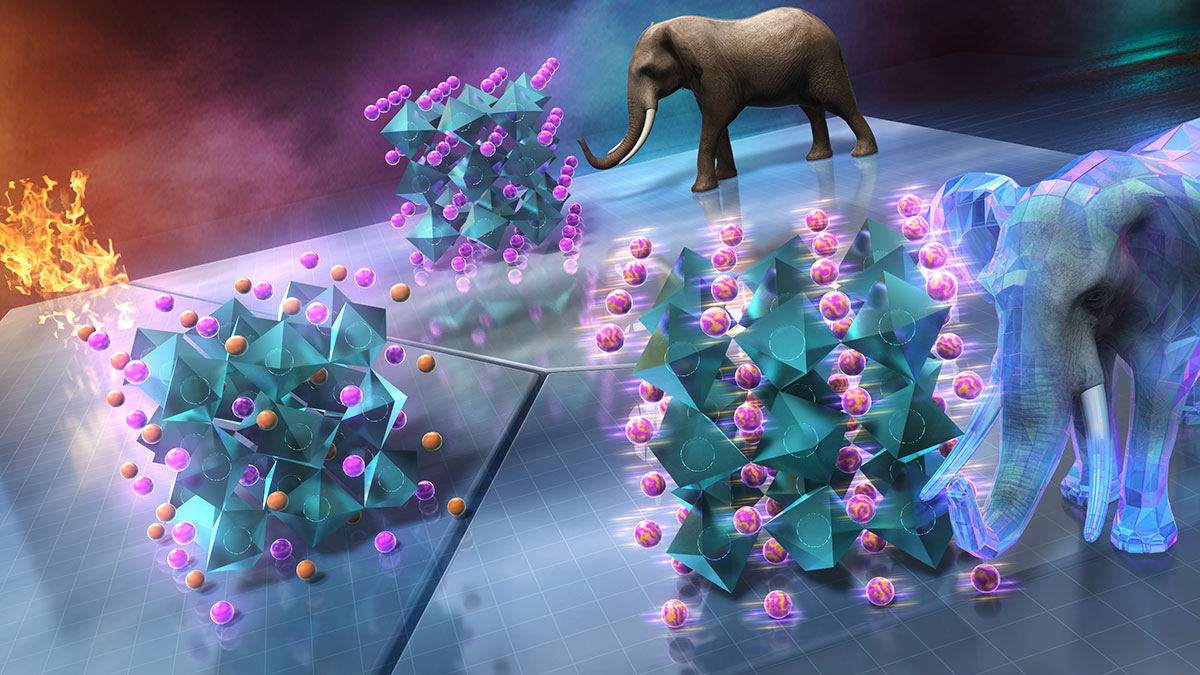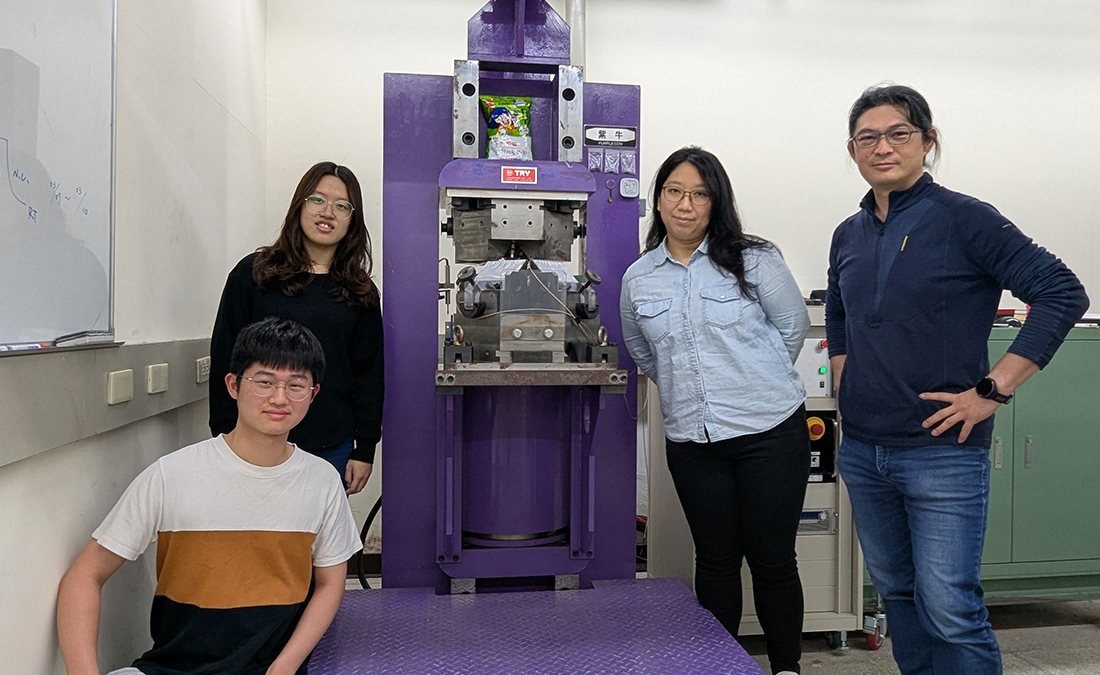▎ACHIEVEMENTS
A New Twist in Material Transformations: Discovery of Pressure-Driven Charge Amorphization

Schematic of BiNiO3 Phase Transformations: Phases of bismuth nickelate (BiNiO3) at various pressures and temperatures, illustrating the transitions between charge ordered, charge glass, and metallic states.
In a breakthrough study led by Dr. Wei-Tin Chen, Assistant Research Fellow at the Center for Condensed Matter Sciences (CCMS) and the Center of Atomic Initiative for New Materials (AI-Mat) at National Taiwan University, researchers have uncovered an unexpected phenomenon in the material BiNiO3: when exposed to high pressure at low temperatures, its orderly electrical charges collapse into a disordered “charge glass” state. This discovery sheds new light on how materials behave under extreme conditions and may open new pathways for developing advanced materials with unique and desirable properties.
The research was conducted in collaboration with Prof. Masaki Azuma at the Research Center for Autonomous Systems Materiology (ASMat), Institute of Science Tokyo, and Prof. Paul Attfield at the Centre for Science at Extreme Conditions (CSEC), University of Edinburgh.
Dr. Chen is specialized in high-pressure sciences, particularly the realization of metastable materials through high-pressure, high-temperature (HPHT) synthesis. By applying pressures of several gigapascals—equivalent to conditions hundreds of kilometers beneath the Earth’s surface—and temperatures reaching around 1,000°C, his team is able to create novel materials unattainable through conventional synthesis methods.
BiNiO3, a member of the perovskite oxide family, is known for its distinctive charge and structural order, stabilized under HPHT conditions. At ambient conditions, the material exhibits a columnar charge order of bismuth ions (Bi3+ and Bi5+). However, when pressure is increased to 3 gigapascals, this ordered state begins to “melt” as charges transfer between the bismuth and nickel ions. Increasing the pressure—between 4 and 5 gigapascals at temperatures below 200 Kelvin—the charge-ordered structure collapses entirely, resulting in a “charge glass” state, such that electrical charges are randomly distributed, akin to how crystals transform into amorphous structures under high pressure.
Notably, when BiNiO3 is heated under pressure, it transitions into a metallic state accompanied by negative thermal expansion—a counterintuitive contraction in volume upon heating. These remarkable phase transitions highlight the intricate interplay between pressure, temperature, and electronic properties.
“These transformations—including charge transfer, charge disproportionation, and charge amorphization—offer new opportunities for designing materials with extraordinary properties, such as negative thermal expansion and magnetocaloric effects,” said Dr. Wei-Tin Chen, lead author of the study. “The ability to manipulate charge arrangements through pressure and temperature could unlock innovations in electronics, sensors, and other advanced technologies that rely on precision material control.”
This research was published in the prestigious journal Nature Communications in 2025, underscoring the powerful potential of combining high-pressure techniques with advanced structural characterization to discover and engineer next-generation functional materials.


